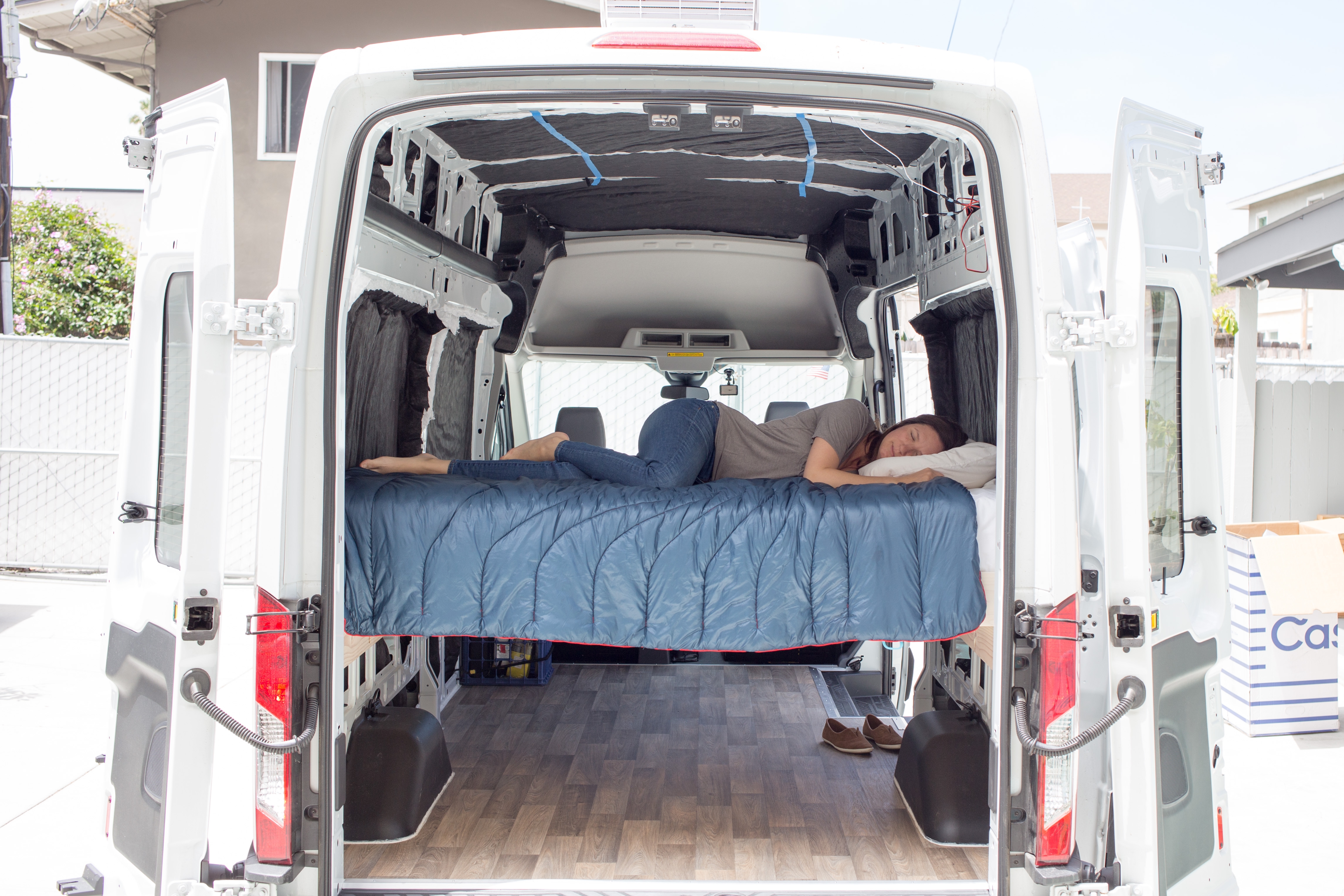Posts in Category: van
Ford Transit Customer Connection Points
Ford Transits come with 1 60A fused Customer Connection Points (CCP) as standard and up to 3x 60A may be fitted depending on vehicle configuration. If you are ordering a custom Transit you can get 3 CCPs by ordering the upfitter switches (option 67C).
If your Transit only has 1 CCP you can add the missing 2 by ordering kit part number BK2Z-14S411-A. CargoVanConversions has a good write up covering the installation process.
Ford Transit Upfitter Switches
When ordering a custom Ford Transit you can add Upfitter Switches, also called auxiliary or accessory switches. These switches allow you to control accessory items like lights, winches, or inverters with factory looking switches.
The switches are simple on/off style with an indicator light located in the center console between the driver and passenger seats. If the key is in the ignition or run position and the switches are turned on (flipped up), they provide a 12 V and 20 A max output.
Build A Surfboard Rack For Your Van
Building a surfboard rack for your van allows you to pull up to your favorite break and pick the right board for the given conditions. It’s pretty awesome being able to do a surf check and have a large part of your quiver available.
After watching a couple Youtube videos it was pretty easy to come up with the plan for Gidget’s surfboard rack. It’s basically just your typical wall mounted rack, but mounted to the floor. The boards are being stored horizontally under the bed, so we created 2 racks to keep them in place.
Creaks, Pops, Cracks, and Squeaks – Redoing The Bed
New creaks, pops, cracks, and squeaks are the last thing I want to hear while road testing a new addition to Gidget. We’re still early on in the conversion so any new noise we introduce is pretty noticeable and infuriating. When we added the bed a couple weeks back we wrote:
We are happy with how it turned out except when driving. Every little bump in the road results in a squeak. It kind of sounds like the metal is flexing where the wood attaches. Maybe we should have put something like felt in between the metal walls and the 2×6 wood? Or maybe we need to take some of the load off of the van walls with a support in the middle of the platform? We’re going to do some experiments to see if we can get the noise down.
After driving it around for a couple of weeks the squeaks reduced somewhat as everything settled but it was still pretty loud. After much debate we stopped being lazy and decided to disassemble the bed and do something about the noise.
Adding A Bed To Gidget
When planning out our van build we knew we didn’t want to have to make the bed every night. We also wanted plenty of storage space under the bed and in overhead cabinets. A platform bed was really the only option.
To save space we decided to install it width wise in the back of the van. In the side cutouts of the van, there was exactly enough room to install a full size mattress.
How-To Install A Vinyl Floor In Your Van
We spent a couple days replacing the soft stock floor mat with a plywood and vinyl floor. The stock mat is not the best foundation to build a bed and cabinets on top of. And it doesn’t give you that cozy home feeling. Instead it gives off a work van vibe, not the killer adventure van feeling we want.
We went with a rather thin floor with minimal insulation so that the D-ring bolt holes are still usable.
Ford Transit Cabin Air Filter Install
Surprisingly the Ford Transit doesn’t come with a cabin air filter even though there is a place for one. I’m guessing the filter was either left out due to cost or because of performance. Maybe with the filter in there the blower isn’t powerful enough ¯\(°_o)/¯ .
Not to worry, you can just buy a filter and install it yourself. The Baldwin PA30000 is the correct filter and can be bought from Amazon.
Joshua Tree For National Park Week
We took Gidget to Joshua Tree this past weekend to test out her off road abilities and because it’s National Park Week.
She did great on the easy Geology Tour trail and made it through about 60% of the way through the Berdoo Canyon trail. We had to turn back due to lack of ground clearance.
How-To Insulate A Van With Thinsulate
You add insulation to a van for the same reasons you add it to a house, to reduce the transfer of thermal and sound energy. Many established methods for insulating traditional homes exist. Unfortunately most of these methods don’t apply to vans as they have metal walls, lots of single pane windows, and lack large HVAC systems.
For the #vanlife community insulation is the most debated topic. You have many options: fiberglass, rigid foam board, Reflectix, recycled denim, spray foam, 3M Thinsulate, vapor barriers, CLD sound deadening material, and many more. Each material has pros and cons and doing the necessary research can be overwhelming.
How-To Install A Roof Fan On Your Van
Tricia here, writing my first post! Over the weekend we tackled the daunting task of permanently modifying Gidget by installing a roof fan. Neither of us have had the pleasure of cutting a huge hole in a vehicle, so it was a little nerve-wracking.
When planning our van build we decided not to install a rooftop air conditioning unit. They tend to remove any notions of stealth, are loud, and need a lot of power to operate. But we also want some level of comfort so we settled on a roof fan. After significant research we discovered there is only 2 serious manufactures: Fan-Tastic and MaxxAir. We went with the MaxxAir MAXXFAN Deluxe 7000K fan because the lid can be open when its raining and when driving.




















